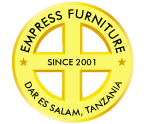During the annual event of Index Design in Dubai, experts emphasized upon two things – “Sustainability and Hybrid workspaces”. As Architects, Interior designers and Furniture manufacturers, we have been practicing sustainability in our designs, trying our level best to adapt to the United Nations Sustainable Development goals or SDG’s. Our constant endeavor to reduce, reuse, repair, recycle, resell and repurpose have been proved advantageous for our future generations to come.
But how does designing a hybrid workspace correlate with sustainability? Of course, other than following the SDG’s, how is “space” considered sustainable? During Covid-19, the dynamics of an office environment changed drastically. To prevent the spread of disease, we all saw people avoiding closed up office spaces and worked online. Post Covid-19, the ritual continued. For some it became the usual norm and only went to an office if required. It even became convenient for some governments – an officials death, natural disasters, diseases, personal leaves, or even festivals, you could work from home – and so, no holidays! But while some were liking the convenience of the work-from-home trend, others found is rather – disruptive! Boredom, suited up formal meetings or a tete-e-tete with a peer were dearly missed. And in some cases, lack of personal workspace, children peeping into zoom call meetings, unnecessary fights with spouses, netflix and the well-stocked fridge within close proximity were too much to bear.
Hence came about the term – a “Hybrid work space”. According to the United Nations, one of the SDG’s states “good health and wellbeing “. In order to implement this in their designs, Architects and Interior designers have been brainstorming on how to ensure the wellbeing of an employee at a workspace. In this fast paced world and forever competing business rivals, a nine to five job can get rather stressful. To create happy workspaces, the typical office space has been divided into various concepts – recreational, learning, commercial, hospitality, social and residential spaces. More and more established offices have been implementing at least two or more of these concepts.
So how does one integrate these concepts? Of course designing spaces reminiscent of these concepts is one thing, but ultimately it all comes down to the type of furniture used. For example cycling chairs are the newest trend. Sitting a on a typical chair for long hours can numb your feet, so cycling while working can be great idea. A small library, with soft furnishing, reclining chairs and sofas can create a quiet niche to encourage learning. Furthermore, an open plan tends to allow conversations amongst employees, but adding private cabins can also enhance concentration for some. These days healthy eating plays a pivotal role for the wellbeing of an individual, so cafes are also incorporated to the workspace. After all who wouldn’t want a quick coffee break without having to run outside the office! A lot of cafe furniture used currently can be biophyllic or modular in design. Tables are incorporated with planters, to grow your own food, or some can be combined to play ping pong ball. Often, out of context placement of benches or informal seating like bean bags are placed throughout the office. These are called “pausing spaces” and help employees take a quick break to stretch their legs or scroll through their phones.
Another term coined by designers just recently is called a “Resimercial” space which essentially means combining residential and commercial components together in a single space. As an integral part of the work culture, it is sometimes crucial for employers to collaborate and so a resimercial design helps create warm, informal spaces to optimize interaction. In here, the furnishing style used is more homely and relaxed, making work a place more inviting. For instance an ordinary work table brightened with colorful legs can provide a more personalized and approachable touch to a workspace that invites creativity and collaboration.
As a final word on this topic, it seems more sensible for us to take this approach for designing our workspaces in today’s time. Happier, relaxed employees foster better work relationships and hence improved results.
